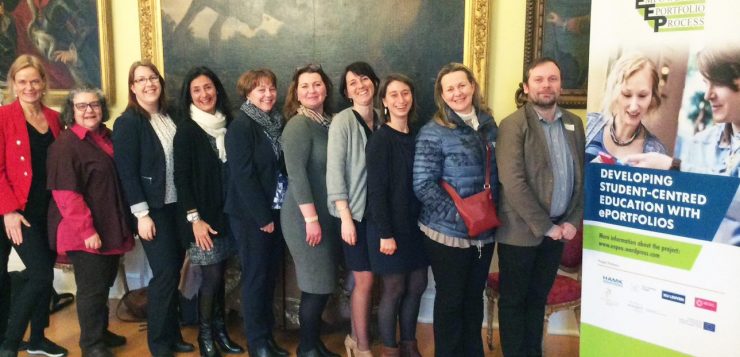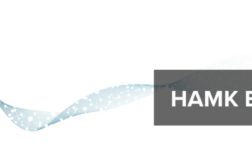Global markets and the exponential development cycles of information technology have transformed both education and the world of work environments. The competence needs of the future are really predictions of the world unknown. However, it is evident that lifelong learning, career management skills as well as digital competences are in the heart of these essential future skills.
The European Union has addressed the development of these skills in several policy level documents such as Modernization of Higher Education strategy (European Commission 2011), the European Employment Strategy – Employment guidelines (European Commission 2017) and the Digital Agenda for Europe (European Commission 2014). All these strategies aim to improve pedagogical practices and labor market relevance of education in order to abolish the gap between the needs of the world of work and the skills supply by promoting lifelong learning and its key competences such as digital skills, civic competences, transversal skills and critical thinking (European Commission 2018). The transnational project “Empowering Eportfolio Process (EEP)” funded by the Erasmus+ programme, investigated ePortfolios as a tool to enhance lifelong learning competences, career management skills and digital competences by addressing the processes around ePortfolios in higher education and all its stakeholders (students, teachers, representatives of the world of work). What came out of the studies were the recommendations for the different stakeholder levels on the successful use of ePortfolios (Kunnari & Laurikainen 2018).
Students are the owners of the ePortfolios – Teachers create an empowering process with appropriate pedagogical practices in guidance and assessment
The one thing that needs to be highlighted is that students should have the autonomy in the ePortfolio process – they need to have the ownership of their ePortfolios. In the first hand, students need to understand the purpose of ePortfolios in integrating different education experiences (formal, nonformal and informal) into a personal showcase of their competences. However, students need certain skills to create and use an ePortfolio, namely reflection skills, digital and generic competences; the skills that also employers seek and value. It is also important to recognize that even though ePortfolios are individual learning spaces or showcases they should benefit from the collaboration with peers, teachers and companies whilst building up students’ professional identities and identifying future opportunities and possible career paths.
Nevertheless, teachers have a key role in facilitating and adjusting the pedagogical practices to support the creation and use of ePortfolios. At its best, the implementation of ePortfolios is a holistic approach throughout the study degree (and even beyond in the lifelong learning context) being embedded into the curriculum. This requires collaboration with other teachers as well as common pedagogical practices in guidance and assessment. In order to achieve this, there should be possibilities for teachers (and managers) to build up the awareness of the meaning of ePortfolios, to recognize its benefits and to share good examples. This can lead to some organizational guidelines, which can support the implementation of ePortfolios. Often the introduction of ePortfolios into the education process may also require updating of the digital competences of teachers (as well as students). On the other hand, teachers need to support students’ process with not only digital skills, but also by ensuring interaction with different stakeholders in the ePortfolio to provide students with continuous professional feedback.
Constantly evolving world of work requires new ways of recruitment and tools for human capital management
According to Barrett (2010), ePortfolios are understood both as learning spaces (the school context) and showcases (e.g. when applying for a job). Thus, when talking about ePortfolios we cannot just address the educational processes but also what happens in the transition phases (e.g. from education to work, and from work to studies). The employers can benefit from ePortfolios by being a part of the educational process around them. The partnership with the educational institute enables companies to build their brand and image amongst students, the potential future employees. The collaboration around ePortfolios can help companies to identify suitable future employees and steer their learning towards a direction that would answer to the needs of the company. ePortfolios also enable better differentiation between the candidates and can thus create better matches in recruitment and more importantly prevent from wrong recruitment choices.
The employers are starting to realize the benefits of ePortfolios and are increasingly utilizing them in the recruitment processes, even in some unconventional fields such as public healthcare. Also, companies are beginning to understand that ePortfolios could have a role in their human resource management processes in planning the development of the human capital. Naturally companies have their own processes and the use of ePortfolios should make those processes more efficient and accurate. Thus, employers’ advice to students or job applicants is to keep the ePortfolios clear and concise – the key message and competences, the personal and professional “brand”, should be visible from the quick glance, and additional information can be organized under different layers, easily to find if necessary. This means that students need to pay attention to carefully choosing and verbalizing the evidence of their skills. Employers also appreciated that the ePortfolio and its content is meant for a specific situation; that the content has been picked to match the specific work position or other purpose.
To conclude, we all can have a learning space ePortfolio to demonstrate our lifelong learning and suitable evidence of our competences can be selected on a case-by-case manner to suit for several purposes during our lifetime. This is the beauty of ePortfolio – It is the narrative of our lives that we can use for our benefit in different situations!
About EEP project
Häme University of Applied Sciences (HAMK) was the coordinator in the “Empowering Eportfolio Process” (EEP) project. The partners from Denmark (VIA University College), Belgium (Katholic University of Leuven, KU Leuven and UC Leuven-Limburg, UCLL), Portugal (Polytechnic Institute of Setubal, IPS) and Ireland (Marino Institute of Education, MIE) have given their valuable input in the project. The collaboration has been very fruitful and network continues its collaboration in creating a common understanding about the successful use of ePortfolios:
“… It has been a great pleasure and privilege to be part of this project, and the project is undoubtedly the solid basis of further friendship and collaboration.”

References:
Barrett, H. (2010). Balancing the Two Faces of ePortfolios. Educação, Formação & Tecnologias 3(1), 6–14. Retrieved 12 December 2017 from http://eft.educom.pt/index.php/eft/article/viewFile/161/102http://eft.educom.pt/index.php/eft/article/viewFile/161/102
European Commission (2011). Supporting growth and jobs – an agenda for the modernisation of Europe’s higher education systems. Retrieved 26 September 2018 from https://eur-lex.europa.eu/legal-content/EN/TXT/PDF/?uri=CELEX:52011DC0567
European Commission (2014). The EU explained: Digital agenda for Europe. Retrieved 26 September 2018 from https://eige.europa.eu/resources/digital_agenda_en.pdf
European Commission (2017). European employment strategy – Employment guidelines. Retrieved 26 September 2018 from http://ec.europa.eu/social/main.jsp?catId=101&intPageId=3427
European Commission (2018). Proposal for a COUNCIL RECOMMENDATION on Key Competences for LifeLong Learning. Retrieved 26 September 2018 from https://ec.europa.eu/education/sites/education/files/swd-recommendation-key-competences-lifelong-learning.pdf
Kunnari, I. & Laurikainen, M. (2018). Fifteen recommendations on meaningful use of ePortfolios in Higher Education. In I. Kunnari & M. Laurikainen (Eds.) Empowering ePortfolio Process. HAMK Unlimited Journal 8.10.2018. Retrieved 18.2.2019 from https://unlimited.hamk.fi/ammatillinen-osaaminen-ja-opetus/fifteen-recommendations
About the author:





